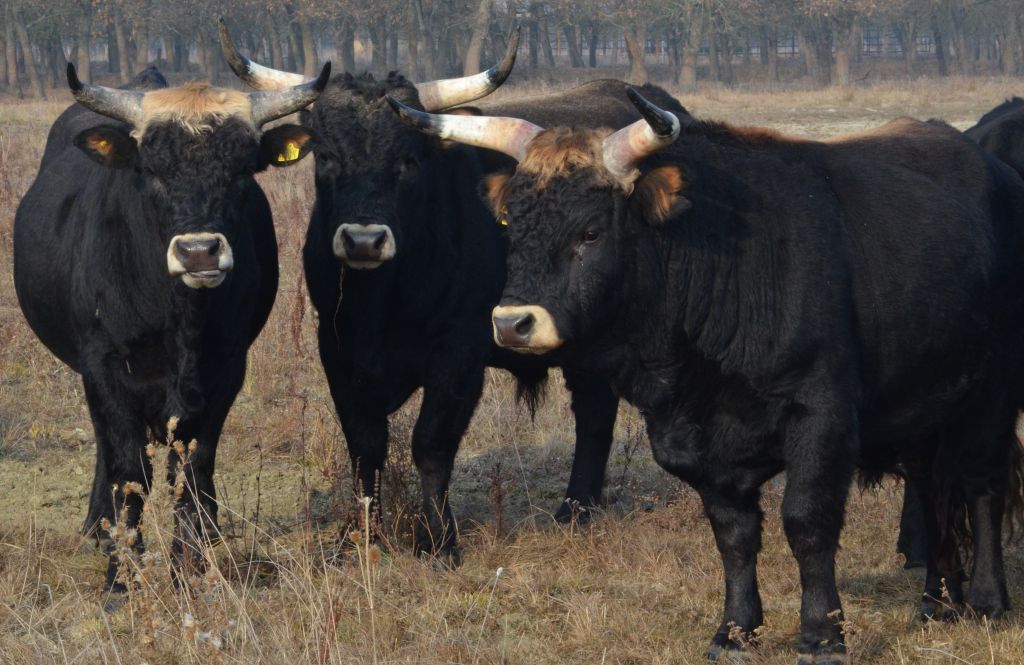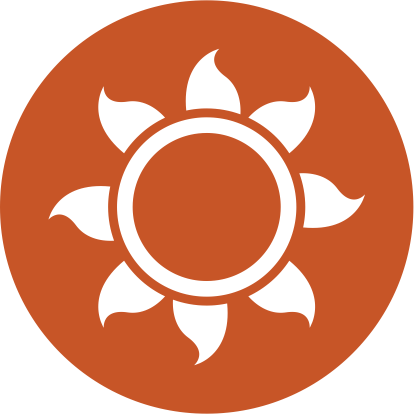Breeding of the reconstructed aurochs
The aurochs is the ancestor of most of the domestic cattle breeds that we know today. It used to be the biggest grazing animal in Europe, even bigger than the European bison. The last aurochs cow died in 1627, in a forest in Poland. Bulls reached a height at withers of 160-180 cm, depending on the habitat they lived in, while cows were much smaller, with a size of about 135-155 cm. Aurochs in Northern Europe were taller than those living in Southern Europe. Bone findings in Hungary prove that the Aurochs in the Hungarian plains had been between 150 and 160 cm high for bulls and up to 145 cm for cows. The biggest bulls could reach a body weight of 1000-1500 kg, while the cows were much lighter. Bulls and cows differed not only in body size and weight, but also in the colour of their coat. While bulls were black with a light coloured dorsal stripe and muzzle, while cows were often of brownish or reddish colour with a lighter, saddle-like region on the back. Even plain red or creamy coloured females could be feasible. Characteristic of the aurochs were the impressive horns that used to be long and thick with a shape similar to those of the Spanish Fighting bulls. The horns of the bulls were much thicker and longer than those of the cows.

Aurochs were grazing herd animals that also fed on leaves and branches of trees and therefore preferred habitats that offered both open grasslands and forests. After the extinction of this impressive animal, no other species could fill the gap left by the aurochs in the ecosystem. The only other bovine in Europe was the European bison that much more depended on the abundance of trees than the aurochs did. At the beginning of the 20th century, several zoologists started breeding programmes with the aim to create a cattle breed that resembles the extinct ancestor in phenotype and behaviour. They crossed several primitive cattle breeds that showed different features reminiscent of the aurochs. Different breeders followed different philosophies and tried to reach the same goal in different ways. All of those breeders were working with Spanish breeds, such as Sayaguesa or Spanish Fighting bulls; but some used Scottish Highland Cattle or Hungarian Grey Cattle in addition. Nowadays, some breeders are trying with the Italian breed Chianina or the African Watusi. There is a vivid exchange of experiences and know-how between the modern breeders. Breeding bulls are often exchanged between the different populations to improve the genetic variability and the appearance of the Reconstructed Aurochs.
.jpg)
.jpg)
The breeding population in Hortobágy counts more than 500 animals now, out of which close to 200 are cows. The founders of the population came from different breeders in Hungary, Austria and Germany. The Hungarian founders have a high percentage of Hungarian Grey Cattle in their pedigree which often leads to a very light coat colour and straight, upwards pointing horns in the offspring. Both are untypical for the extinct Aurochs, so that the actual breeding procedure attempts to eliminate such unwanted features. The horn shape, length and thickness we try to improve by the influence of Watusi cattle that are cross-bred with some of our best breeding animals. The first calf from our Watusi cow ‘Miriam’ and aurochs bull ‘Anno’ was born in 2014. Hopefully he will show all the positive features we expect him to develop.
.jpg) |
.jpg) |
.jpg) |
The breeding of the Reconstructed Aurochs is a very creative and interesting process with an uncertain outcome. What was once lost in nature cannot be brought back later on, but we try at least to create a cattle breed that is as similar as possible to the extinct ancestors. The future will show how close we can get to our grand goal.















